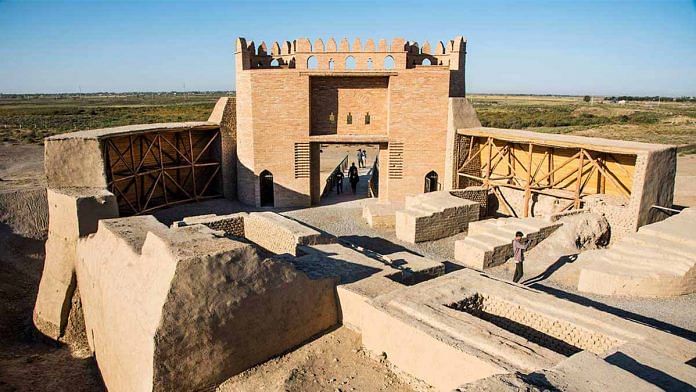Bengaluru: Drought induced by climate change, and not war, is likely to have led to the decline of Otrar, the central Asian ghost town in Kazakhstan, that flourished on the Silk Road till the 13th century, according a study.
The medieval city — an important seat of agricultural, trade, political and economic power in Central Asia — was thought to have declined after the Mongol invasions in the early 1200s led by Genghis Khan, and the gradual diminished importance of the Silk Road, the network of trade routes that connected Asia, Africa, Europe and the Arabian Peninsula.
However, the study, performed by an interdisciplinary team of researchers, shows the oasis of Otrar was already in decline a century before the Mongol invasions due to steadily decreasing access to water and increasing drought.
The findings were made using a combination of a radiometric dating technique called optically stimulated luminescence (OSL) dating and radiocarbon dating, which identifies when particles of sand were last exposed to sunlight.
The researchers collected sediment samples from dried up canals that transported floodwaters for irrigation and used OSL and radiometric dating to determine when the canals were abandoned. The team found that the drought had already set in much before the Mongols arrived and the invasions made it even harder to recover.
The study was published in the Proceedings of the National Academy of Sciences journal in December.
Also read: Dog-like predator with kangaroo pouch, believed extinct since 1930s, possibly lived till 2000s
Transoxania as oasis
Also called Farab, Otrar was often referred to as the “land of the thousand cities”, and was situated at the trading and political intersection of Siberia, the Middle East, Asia, Europe, and China.
Its existence can be traced to the Persian Empire, to approximately 400 BCE. However, the city itself reached its peak between the 1st century BCE and 5th century CE. It flourished till the 13th century CE and was located between the rivers of Syr Darya and Arys in present day Kazakhstan.
The 2-square-kilometre city had access to about 50,000-sq-km of fertile land irrigated by these rivers. The entire region — now part of present-day Kyrgyzstan, Uzbekistan, and Tajikistan — was an oasis and came to be known as Transoxania.
Otrar continued to be occupied, but its incessantly feuding occupants steadily dwindled from the 14th to 17th centuries. By the 18th century, its occupants were a mere handful and the irrigated area had shrunk down to barely 5 sq km.
It was previously believed that the Mongols, who invaded Central Asia in the early 1200s, hit Transoxania’s Khwarazmian Empire through its famous canals to cripple the region. While Otrar city subsequently became an important seat of political and economic power for the Mongols, the region’s prosperity never recovered. And as the Silk Road lost its importance, Otrar was eventually abandoned.
The research team started its work assuming that the canals fell out of use after the invasions but found to their surprise that they had already been in a state of prolonged decline for a long time before that.
Also read: Dinosaur fossils found in Argentina could be of the largest animal ever lived on Earth
Luminescent sand grains
To perform OSL dating, the sediments had to be extracted in such a way that they do not get exposed to sun or light. For that, the researchers inserted metal tubes into the sediment, sealing both ends tightly and preventing exposure to light.
All sand, soil, and sediments contain minute trace amounts of radioactive elements like uranium or thorium. These decay over time and the ionising radiation they emit is absorbed by other minerals in the same sediment, such as quartz. By analysing how much radiation has been absorbed, optical dating can be performed where the age of previous exposure to light is calculated.
Exposure to light, even if it is just for mere seconds, releases trapped electrons in the form of light, effectively “resetting” the minerals. The technique has been perfected to a high degree of accuracy, and can be used to accurately date objects that are up to 2,00,000 years old.
The researchers also reconstructed climate records in Transoxania over the past 2,000 years, which supplemented and supported their findings that the irrigation-dependent culture had been in decline before the fatal Mongol invasions. Archaeological evidence, too, shows a decline in the region’s culture and trade before the invasions began.
The findings follow other similar studies investigating the decline of ancient civilisations, which conclude that the primary culprit for the decline of rich cultures like the Indus Valley Civilisation was likely to have been climate change and drought, more than any other cause previously believed.
Also read: How dogs became our best friends — new study on diet of Ice Age humans, wolves has an answer






